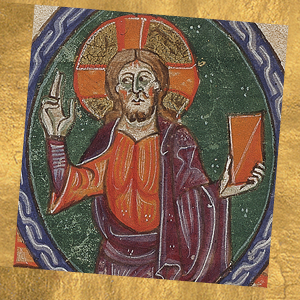St.Hedwig, Duchesse of Polonia, Religious

It was not difficult to demonstrate charity, even if the body was clothed in silk and a tiara rested on one’s head. Providing for the poor was a common practice for nobles in the Middle Ages. Even if some were motivated by a careless philanthropy, many others were inspired by a genuine piety. But whether done out of choice or obligation, this custom was the rule… and rules were meant to be broken.
The richness of poverty
St Hedwig was the exception to the rule. In the latter part of the 12th century, she was married to the Duke of Lower Silesia, Henry the Bearded. She soon became a mother, ultimately giving birth to six children.
From the beginning, the young duchess seemed to her subjects like a beautiful queen: not because of her regal attire, but on account of her prompt generosity, which was always ready to comfort and support the poorest and most needy among them. Although she herself was German, she was close to her people, and learnt from them their Polish language. She was so modest that she was able, in an unheard of way, to disregard the fashions that her rank would have imposed upon her. Hedwig was not too proud to dress herself in used clothing and old shoes. She did not want to stand out from the poor, because, she said, “they are our masters.”
The duchess who became a religious sister
Hedwig expressed this conviction to Gertrude, the youngest of her six children. Her life as a wife and mother had been filled with many sorrows. The duchess, who had stood by her husband and assisted him in his duty of governing, had witnessed the death of three sons and two of her three daughters. She bore her pain with composure, a result not only of the attitudes of her time and culture, but of her strong Christian faith. She found comfort in the daily life of faith and prayer.
As time passed, she found herself attracted more and more to consecrated life. After the death of her husband, entering into a monastery was a natural step for Hedwig to enter a monastery. She chose the Cistercian monastery of Trebnitz, which Hedwig herself had founded in 1202. The duchess took up the religious habit of a lay sister. When she died, on 15 October 1243, no one had any doubts: it was the death of a saint. She was formally canonized by Pope Clement IV in 1267.







